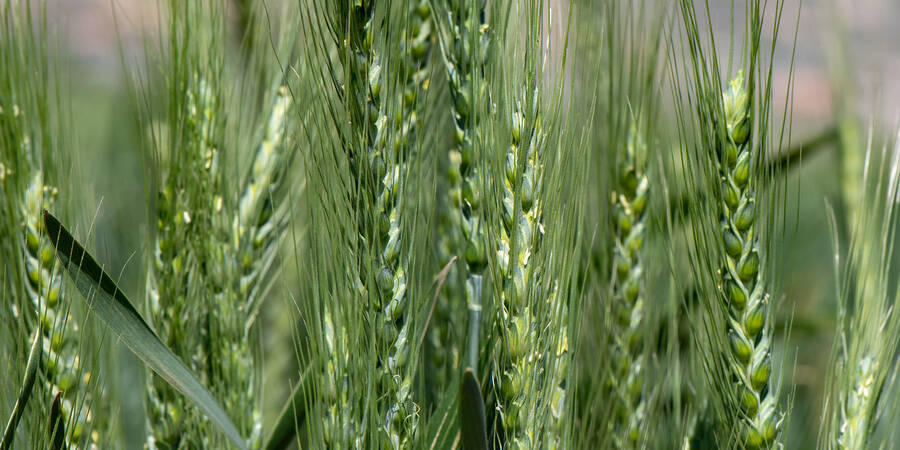Morocco’s Wheat Sector: Higher Productivity is Within Reach

It is thanks to the support of CGIAR's Research Program (CRP) on Wheat and INRA Morocco that this work is made possible.
A recent study by ICARDA scientists analyzed Morocco’s wheat sector, a strategic crop that is still heavily imported, to identify areas where productivity can be increased to boost smallholder farmers’ yields and income. To this day, Morocco only produces about 58 percent of its needs in wheat and struggles to satisfy the ever growing local demand. To meet its cereal needs, Morocco’s imports have steadily increased over time, at 42 percent for the last 10 years.
Morocco’s climate is arid and semi-arid. About 83 percent of the total wheat area is rain-fed, and the remaining 17% is irrigated. The ICARDA study, recently published in the prestigious journal Agricultural Systems, investigates prevailing crop management practices, current and potential yield grains, and gross margins in rainfed and irrigated systems to guide future research, investment, policies, and institutional objectives. Current production practices were analyzed using data from a nationally representative sample of 2296 wheat fields.
In rain-fed systems, the frequency of tillage operations before seeding, followed by the amount of fertilizer applied, the quality of the seeds used, and the type of previous crop planted before wheat (pulse/cereal) are the key variables determining grain yield of wheat.

The type of crop (pulse or a cereal) cultivated before wheat crop turns to be the leading variable that accounts for yield gaps in irrigated systems. The other important variables are the wheat variety chosen, the quality of seed used, and the amounts of fertilizers used. Grain yield and grain price were the most important variables explaining gross margins showing that differences in production costs are less important.
These findings have huge implications for Morocco’s wheat sector in terms of policy and institutional changes. Wheat productivity in the irrigated wheat-based systems can be greatly improved through the adoption of legume based rotations. In rainfed systems, farmers would see a huge difference in wheat yields by opting for no-till methods, in addition to using more fertilizers, and choosing certified seeds. Because of their ability to fix atmospheric nitrogen, legumes can reduce the need for nitrogen fertilizer. They also increase the bioavailability of nutrients and hence enhance phosphorus efficiency.
Therefore, it would be very beneficial for rain-fed cereal-based systems to adopt conservation tillage and crop diversification through the introduction of legumes in the system, which would enhance the production system’s overall sustainability while cutting costs down for farmers.
Read more about ICARDA's Climate Smart Crops

This study was funded by the CGIAR Research program on Wheat (CRP-WHEAT) and INRA-Morocco
-

Dr. Mina Kumari Devkota Wasti is ICARDA Agronomist. Soil Waters and Agronomy.

Dr. Yigezu Atnafe Yigezu is ICARDA Senior Agricultural Economist.
